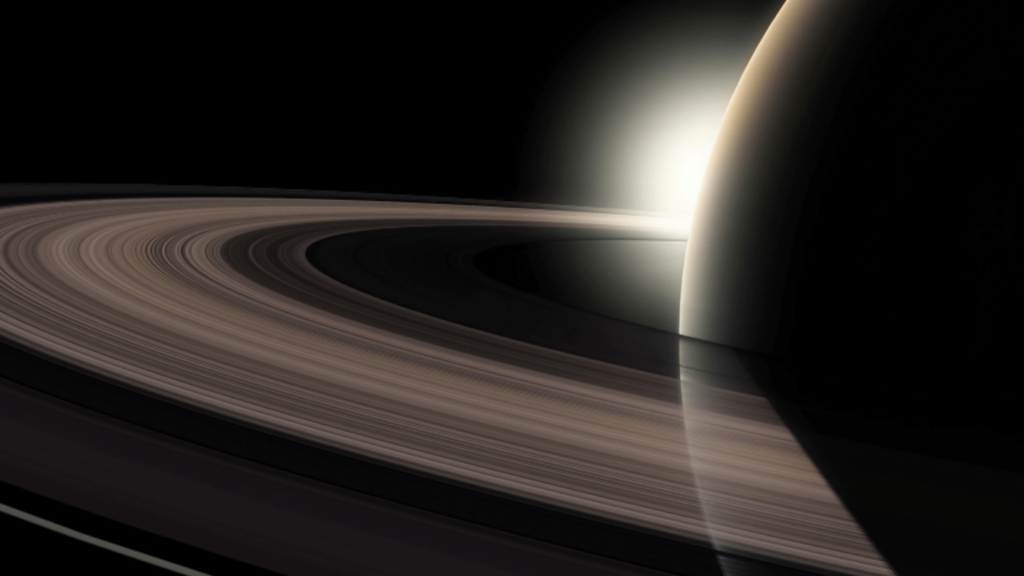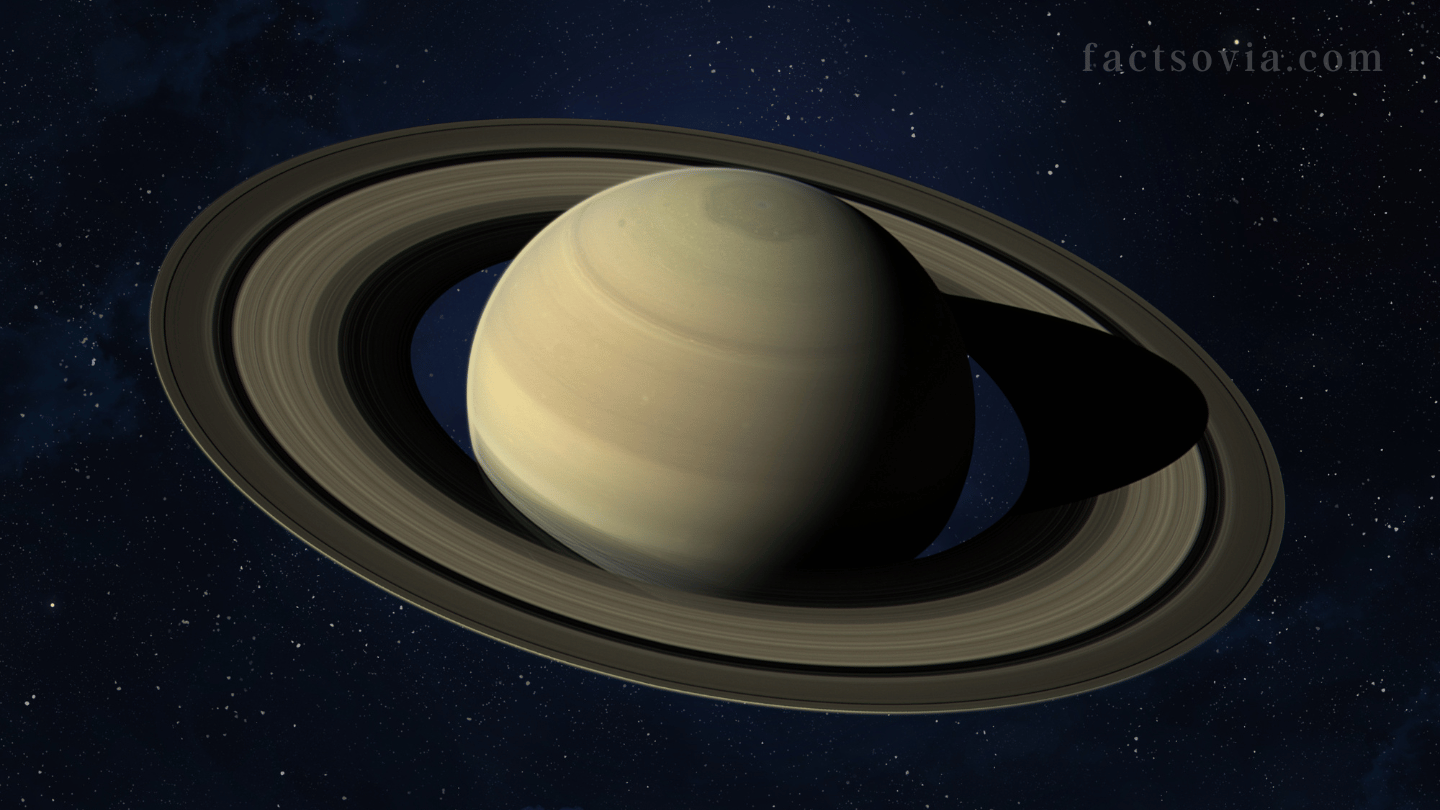We use affiliate links to run our site. When you buy through links on our site, we may earn an affiliate commission, without any added cost to you. Learn more
Planet Saturn, with its mesmerizing rings and intriguing features, has captivated the imagination of astronomers and space enthusiasts for centuries.
As the sixth planet from the Sun and the second-largest in our solar system, Saturn holds numerous secrets waiting to be uncovered.
In this article, we will explore ten fascinating facts about Saturn that will leave you astounded and eager to learn more.
In A Nutshell:
| Distance from the Sun | Sixth planet from the sun |
| Size | Second-largest planet in the solar system |
| Moons | Has a total of 145 moons |
| Rings | Composed of billions of particles of ice and rock |
| Composition | Mostly made up of hydrogen and helium; the least dense planet |
| Rotational Period | Rotates about once every 10.5 hours |
| Appearance | Yellow and gold bands in the atmosphere; bulging at the equator |
| Auroras | Stunning auroras visible in ultraviolet light |
| Missions | Pioneer 11, Voyager, Cassini; proposed mission: Dragonfly |
| Influence on the Solar System | Gravity may have influenced the positioning of other planets |
1. The Discovery of Saturn
Saturn’s existence has been known to humanity since ancient times. However, it’s unique nature and distinct features were not fully understood until the advent of telescopes.
The Italian astronomer Galileo Galilei was the first to observe Saturn through a telescope in 1610, although he initially mistook the planet’s rings for two separate objects.
2. The Spectacular Rings of Saturn
Saturn’s most prominent feature is its magnificent ring system. Composed mainly of ice particles ranging in size from tiny grains to enormous chunks, these rings encircle the planet and create a stunning visual spectacle.
Contrary to popular belief, the rings are not solid; instead, they consist of countless individual pieces orbiting Saturn.

3. The Unique Hexagonal Storm on Saturn’s North Pole
One of the most peculiar phenomena observed on Saturn is the hexagonal storm at its north pole. This massive hurricane-like storm has a distinct hexagonal shape and is larger than Earth itself. Scientists are still studying the exact cause of this intriguing weather pattern and its persistence over time.
4. Saturn’s Many Moons
Saturn boasts an impressive collection of moons, with over 80 moons discovered to date. Titan, Saturn’s largest moon, is of particular interest due to its dense atmosphere and the presence of liquid hydrocarbon lakes. Enceladus, another moon of Saturn, has geysers erupting from its south pole, indicating the possibility of subsurface liquid water.
5. The Low Density of Saturn
Despite its enormous size, Saturn has a surprisingly low density. In fact, if a giant bathtub were able to hold water big enough to accommodate Saturn, the planet would float! This low density is due to a large amount of lighter elements, such as hydrogen and helium, in its composition.
6. Saturn’s “Rotation and Revolution”
Saturn, like Earth, rotates on its axis. However, it has an exceptionally short day, taking just under 11 hours to complete one full rotation. On the other hand, Saturn’s revolution around the Sun is much slower, with a single orbit lasting approximately 29 Earth years.
7. Saturn’s Massive Magnetic Field
Saturn possesses a powerful magnetic field that is around 578 times stronger than Earth’s magnetic field. This magnetic field extends far into space and interacts with the planet’s moons and rings.
The interaction between Saturn’s magnetic field and the particles in its rings creates a complex and dynamic environment.
8. The Cassini-Huygens Mission
The Cassini-Huygens mission, a collaboration between NASA, the European Space Agency (ESA), and the Italian Space Agency (ASI), provided invaluable insights into the mysteries of Saturn.
Launched in 1997, the spacecraft reached Saturn in 2004 and spent over a decade studying the planet and its moons.
The mission yielded remarkable discoveries, including detailed images of Saturn’s rings, the exploration of its moons, and crucial data about the planet’s atmosphere and magnetic field.
9. The Possibility of Life on Saturn’s Moons
Saturn’s moons have captured the attention of scientists searching for potential extraterrestrial life. Enceladus, with its subsurface ocean and geysers spewing water vapor into space, has become a prime target for further exploration.
The presence of liquid water and the necessary chemical ingredients on this moon raise the exciting possibility of finding microbial life or the conditions suitable for its existence.
10. The Future Exploration of Saturn
The study of Saturn is an ongoing endeavor, and future missions aim to deepen our understanding of this captivating planet. The James Webb Space Telescope, set to launch in the near future, will provide unprecedented observations of Saturn and its atmosphere.
Additionally, proposed missions such as Dragonfly, a rotorcraft lander planned to explore Saturn’s moon Titan, hold the promise of unveiling even more secrets hidden within this enigmatic system.
Final Thoughts:
In conclusion, Saturn continues to enchant and intrigue us with its awe-inspiring features and captivating mysteries. From its stunning ring system to its unique storms and diverse moons, this gas giant offers a wealth of scientific discoveries and the potential for groundbreaking revelations about our universe.
As we continue to explore and unravel the secrets of Saturn, the allure of this remarkable planet will undoubtedly inspire future generations of space explorers.
Frequently Asked Questions:
Is Saturn the only planet with rings?
No, other planets in our solar system, such as Jupiter, Uranus, and Neptune, also have ring systems, although they are not as prominent or extensive as Saturn’s rings.
How many rings does Saturn have?
Saturn has thousands of rings, but they are grouped into several main rings named A, B, C, and D. The rings are further divided into smaller ringlets.
Can we see Saturn’s rings from Earth?
Yes, Saturn’s rings are visible from Earth with a telescope. They appear as a thin band surrounding the planet.
Can humans live on Saturn?
No, Saturn is a gas giant composed mainly of hydrogen and helium. Its extreme atmospheric conditions and lack of a solid surface make it uninhabitable for humans.
What is the origin of Saturn’s rings?
The exact origin of Saturn’s rings is still not fully understood. Some theories suggest that the rings formed from the debris of a shattered moon or a passing comet that was torn apart by Saturn’s gravity.
Amazon and the Amazon logo are trademarks of Amazon.com, Inc, or its affiliates.
